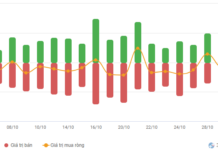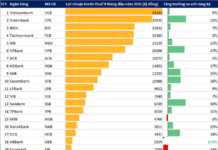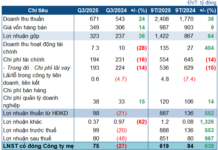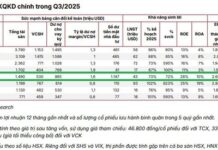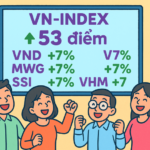As shared by Mr. Nguyen Minh Hanh, Director of the Analysis Center of Saigon – Hanoi Securities Joint Stock Company (SHS Research), if the board of directors and management of the enterprise do not clearly define IR as a strategic activity that requires serious investment, all subsequent efforts will be difficult to implement methodically and effectively. Lack of commitment even risks reducing IR to a mere formality.
In reality, stock prices often experience significant discounts when negative information surfaces, and enterprises respond sluggishly, lack transparency, or attempt to evade the issue. In contrast, enterprises with open-minded leaders who are willing to engage in dialogue and provide clear commitments alongside concrete actions tend to garner trust and significant positive feedback.
From this perspective, to establish effective IR, especially for small and medium-sized enterprises, Mr. Hanh believes that the decisive factor is the will and proper orientation of the management team.

Activities at Saigon – Hanoi Securities (SHS)
|
Information Barrier and Missed Opportunities
For all listed enterprises, regardless of scale, investors’ primary requirement is timely access to official, comprehensive, and thorough information, going beyond the scope of mandatory disclosures. The director of SHS Research states that the most significant barrier to information access stems from enterprises’ lack of initiative.
Numerous enterprises still approach information disclosure as a mere “obligation,” providing superficial and shallow content that fails to support analytical activities. Meanwhile, some organizations continue to face obstacles due to cumbersome internal processes, resulting in delayed information that loses its timeliness.
According to Mr. Hanh’s observations, the IR team’s ineptitude has led to difficulties for some enterprises in connecting with investors. They have missed opportunities to convincingly convey their strengths and growth prospects.
Additionally, a common limitation is the absence of a dedicated IR personnel, leading to disrupted interactions with investors or the need to go through multiple intermediaries. Nowadays, most enterprises only respond to information requests instead of proactively sharing their strategies, financial performance, or significant changes. For institutional investors, a prerequisite for inclusion in their analytical models is comprehensive, timely, and systematic information. Therefore, if an enterprise infrequently updates information and remains silent in the market, they are likely to be excluded from the list of interests, even if their financial health remains robust.
Neglecting the importance of information disclosure causes enterprises to forfeit immense benefits. In their role as IR advisors to numerous enterprises, SHS representatives share that a promising enterprise coupled with a professional IR strategy will strengthen and enhance the position of its stock, thanks to improved liquidity and stable capital inflows from long-term investors. In the market, enterprises with effective IR practices generally attain higher valuations compared to their peers in the same industry but with weaker IR performance.
Concurrently, their business standing improves as they can more easily attract partners and access capital from investment funds and banks on more favorable terms. According to the Director of SHS Research, investment funds always pay close attention to transparent enterprises with clear strategies. Therefore, IR should be perceived as a strategic tool, not merely a “backstage” activity supporting stock prices.

The Profile of Effective IR
As mentioned, the decisive factor for practicing IR is the determination and proper orientation from the management team. Subsequently, enterprises need to prioritize several fundamental factors.
Firstly, IR should shape the enterprise’s profile and construct a clear investment narrative. Some enterprises become “faint” in the market because they fail to portray who they are and their strategic direction. In contrast, numerous enterprises, initially small and medium-sized, have elevated their stature and attracted more investors through systematic IR practices closely linked to their long-term development orientation, ultimately improving their valuation.
Secondly, transparency and information dissemination must surpass mere compliance requirements. Timely disclosure of information is a necessary but insufficient condition. Enterprises need to explain the data, provide context, and answer the “why” questions to help investors grasp the essence.
Thirdly, enterprises should enhance dialogue and regular interactions with investors. IR is not just about issuing reports or newsletters; it’s about direct engagement, building trust through openness and consistency. IR teams in enterprises should also pay attention to consistency, an often-neglected factor. In reality, there have been cases where enterprises disclosed positive information at certain times, only to remain silent afterward or make contradictory statements. This leads investors to doubt the strategy the enterprise has proclaimed, even suspecting that IR is “telling an untrue story.”
For small and medium-sized enterprises with limited resources, SHS representatives believe that there are cost-effective ways to implement effective IR practices while complying with regulations. With a clear IR policy and serious commitment from the management, enterprises can leverage existing events. For instance, a listed retail enterprise, despite not organizing periodic analytical meetings, maintains investor trust and interest through continuously updated analytical reports, well-organized annual general meetings, and dedicated time for direct discussions, conveying consistent messages over the years and demonstrating clear actions. This example illustrates how a well-executed periodic event can effectively replace other costly activities.
There is no need to organize grand events. Some low-cost yet effective formats to maintain dialogue between enterprises and investors include issuing periodic IR newsletters, conducting online meetings, and utilizing existing communication channels in a focused, professional, in-depth, and regular manner.
Anxiety Among Shareholders as Phat Dat’s Chairman Registers to Sell up to 88 Million Shares
“A recent filing by the Chairman of Phat Dat has investors on edge. The chairman has registered to sell 88 million PDR shares, a move that has the market abuzz with speculation. With the sale coming on the heels of a holiday, all eyes are on the stock’s performance and the impact this move could have on the broader market.”
The Stock Market Guru’s Guide to IR: Riding the Wave of Market Upgrades
The Vietnamese stock market is on the cusp of a historic opportunity as FTSE Russell is considering an upgrade in October 2025. This upgrade will potentially attract a significant influx of foreign capital. However, not all businesses will be able to capitalize on this opportunity, as suggested by Nguyen Thi My Lien, Head of Analysis at Phu Hung Securities Co..


